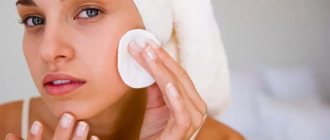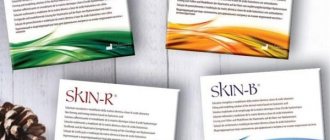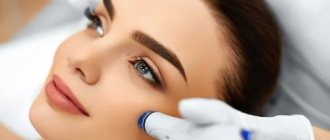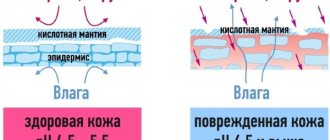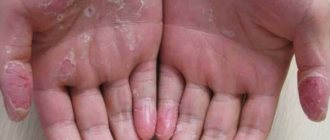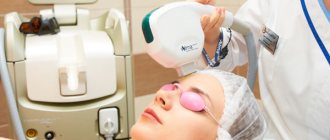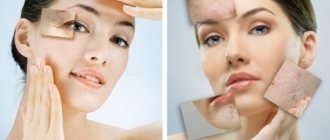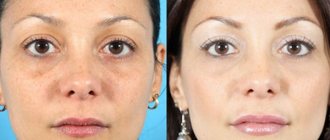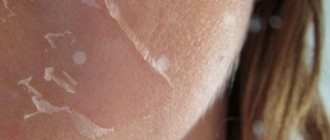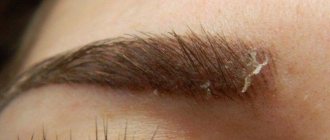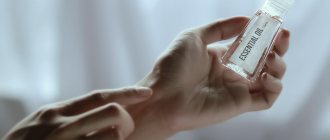From this article you will learn:
- What is a skin phototype
- What are the Fitzpatrick skin phototypes?
- What are the alternative classifications of skin phototypes?
- What will knowing your skin phototype give you?
- How to determine your skin phototype using a simple test
- What are the rules of tanning for different skin phototypes?
For some people, getting a perfect tan is easy, while others may spend long hours on the beach without the desired results. It all depends on the skin phototype, which is embedded in the genetic code of each of us and remains unchanged even under the influence of various factors. In this article we will look at what skin phototypes there are and how to determine them.
What is a skin phototype
The skin phototype is the level of its response to ultraviolet rays (sunlight), expressed in pigmentation. This indicator is innate and does not change throughout life, even under the influence of the strongest internal and external factors. The biological basis of a person’s skin phototype is the level of reaction of melanocytes – the cells responsible for the production of melanin. This natural dye is involved in the formation of tanning, moles and freckles. Also, their color depends on the amount and density of distribution of melanin in the iris of the eyes.
Skin cells - melanocytes - are located in its surface layers and give the skin a dark shade with the help of the melanin pigment.
It is important for every person to know their skin phototype, since not only external beauty, but also the health of the body as a whole depends on it. For example, the level of ultraviolet radiation absorbed by the skin affects the development of tumors, including malignant ones. These facts are confirmed by scientific and medical research.
Before you start determining your skin phototype, you should study its classifications.
Recommended articles on the topic:
- Laser facial skin rejuvenation: useful tips and tricks
- Masks for facial rejuvenation: 8 tips from cosmetologists
- Microcurrent facial therapy - a beneficial treatment for your skin
What is the Fitzpatrick scale
The Fitzpatrick skin phototype test is a scientific classification that is aimed at determining acceptable levels of ultraviolet exposure.
p, blockquote 6,0,0,0,0 —>
The scale was developed in 1975. She classifies all types of skin tones depending on the amount of pigment and reaction to sunlight. Such information is useful in determining the risk of sunburn and skin cancer.
p, blockquote 7,0,0,0,0 —>
After determining the individual level of risk, you can choose the right sunscreen and find out the permissible duration of insolation.
p, blockquote 8,0,0,0,0 —>
Skin phototypes according to Fitzpatrick using the example of show business representatives
There are many gradations and systems for determining a person’s skin phototype. They are all similar to each other. The most convenient and widespread is the development of the American dermatologist Thomas B. Fitzpatrick. Fitzpatrick's skin phototypes are divided into six groups according to the saturation of the dermis with melanin and its reaction to ultraviolet radiation. This scale also takes into account hair and eye color.
Below are examples of Fitzpatrick skin phototypes with photos of celebrities.
First phototype, or Celtic
Winners: Nicole Kidman, Renata Litvinova.
The Celtic skin phototype includes people with blue and light green eyes and often blond or red hair. Representatives meet in Scotland and Ireland.
Skin color is milky white or porcelain, most often with a large number of freckles.
Under adverse influences or nervous tension, this type of skin turns red.
Second phototype, or light European (Nordic, Aryan, Scandinavian)
Winners: Gwyneth Paltrow, Natalia Rudova.
Representatives of the second skin phototype according to the Fitzpatrick table are characterized by gray, green and blue eyes and brown hair.
The skin color is slightly darker than the first type, ivory shades predominate, and freckles are rare.
This phototype is common among people in Europe and Scandinavia.
Third phototype, or dark European
Winners: Angelina Jolie, Natalie Portman.
Representatives of the third phototype have dark brown or light brown hair, brown and gray eyes, and dark skin.
The fourth phototype, or Mediterranean (South European)
Winners: Tina Kandelaki, Kim Kardashian.
The fourth skin phototype is typical for residents of Latin America and Spain.
These people have dark hair, brown eyes and dark skin, with no freckles.
Fifth phototype, or Indonesian (Middle Eastern)
Winners: Nicole Schisinger, Lucy Liu.
This type of photosensitivity is typical for residents of Eastern countries.
Representatives of the fifth skin phototype on the Fitzpatrick scale never burn in the sun, as they have dark skin. They all have black hair and brown eyes.
The sixth phototype, or African-American
Winners: Halle Berry, Cornelia Mango.
African Americans and Africans have a sixth skin phototype.
Their sensitivity to ultraviolet light is characterized by chocolate brown skin, black eyes and hair.
Read material on the topic: How to properly care for your facial skin - useful tips for every day
Oily skin care
Oily skin usually causes its owners a lot of problems and troubles.
Typically, this type of skin is characteristic of young people during puberty, although adults (about 10% of adults are also affected by its presence).
In oily skin, the sebaceous glands work more intensely than usual, secreting sebum, so it is covered with a fatty film and is poorly supplied with blood. The outer layer of the skin is thick, the pores are often clogged, and the sebum cannot come out, often causing acne and pimples on such skin.
Proper care for oily skin is crucial. Without it, the sebaceous glands will be overactive, and the respiratory and protective functions of the skin will weaken, and immunity will decrease.
In the selection of care products for oily skin, methods of prevention and treatment of acne, the cosmetologist pays great importance to the individual indications of each patient. There are no universal remedies in this situation.
It is clear that oily skin needs to be cleansed, but not excessively! This is the most common mistake when oily leather is constantly disinfected, literally dried and tanned. In response to this, the skin begins to produce sebum even more actively, which contributes to clogging of pores and exacerbation of inflammation. In fact, moisturizing is the prevention of acne and aging.
For oily skin types, professional skin care and cosmetic procedures (cleansing, masks, peelings, Dermadrop, etc.) have a beneficial effect.
| Face creams for oily skin should be light in texture - serums, emulsions. The best anti-aging remedy is all massage techniques, Skintonik, JetPeel, which improve blood circulation and normalize the functioning of the sebaceous glands. |
Alternative classifications of skin phototypes
- Felix von Luschan scale.
More than a hundred years ago, the German anthropologist Felix von Luschan developed a chromatic scale that made it possible to classify six skin phototypes. Lushan's set consisted of 36 opal glasses, ranging in color from pinkish white and pale yellow to black. To determine the phototype, it was necessary to apply glasses to untanned areas of the skin.
The Lushan scale can provide a more accurate classification of skin tone than the Fitzpatrick scale, but it also turns out to be quite individual: different untanned areas may differ from one person to another. In 2006, dermatologist Taylor developed a color card system to determine skin phototypes and the degree of dyschromia. His set consists of laminated cards with 10-15 shades and about 100 cards with hyperpigmented shades.
- R. J. Glogau scale.
The R. J. Glogau scale was developed in 1994 for medical students who will be treating patients with photodamage to the skin. The main signs that were taken into account were the total number of wrinkles and folds, the presence of keratosis (thickening of the stratum corneum of the skin), the degree of depigmentation, etc.
For cosmetic procedures aimed at combating photoaging, the Glogau scale is used, which helps determine the condition of the patient’s skin. Thanks to the Rubin scale, it is possible to assess the degree of photodamage by its depth, which is divided into three levels: damage to the epidermis, damage to the dermis layer, damage to the deepest layers of the skin (reticular layer).
- Roberts scale.
The Roberts scale is the most accurate diagnostic system that will help determine human skin phototypes. It combines the Fitzpatrick scale and Glogau tables. Using this system, five thousand skin types can be identified. The accuracy of the Roberts scale allows you to determine the sensitivity of the skin to ultraviolet radiation, to predict what its reaction to injury, inflammation and hemorrhage will be, which is very convenient when performing hardware procedures.
Read material on the topic: How to remove wrinkles on the face: the most effective methods
Care for normal skin
Normal skin is characterized by a balanced ratio of all substances (water, proteins and fats), an intact water-fat layer, and a natural acidic mantle. This type of skin is very rare and usually only occurs in young, healthy people. On average, only 6-8% of adult women have normal skin.
In normal skin, everything is normal: sebum secretion, elasticity. It is elastic, smooth, with a beautiful natural shine, without wrinkles or enlarged pores. This skin is velvety-silky to the touch. It tolerates washing with water and unfavorable weather - wind, frost, heat.
In terms of care, this is the most grateful and unpretentious skin, requiring only regular cleansing and then applying a light nourishing or moisturizing face cream.
| Do not burden normal skin with unnecessary care. |
What will knowing your skin phototype give you?
It is useful for every person to understand their skin phototype, as this information will help prolong its youth and freshness.
It is important for professionals to know how many skin phototypes there are and to be able to identify them, because the correct prescription of light-thermal treatment (laser and photoepilation) depends on this.
Knowing your level of sensitivity to UV rays will help you prevent the appearance of age spots and choose cosmetic sun protection products.
According to statistical studies on skin health, ultraviolet radiation can contribute to the appearance of skin tumors.
You need to know your skin phototype for:
- correct selection of protective cosmetics with the required SPF level;
- determining the safe mode and duration of exposure to ultraviolet radiation (including artificial) to prevent burns;
- correct selection and favorable completion of cosmetic procedures (chemical or laser peelings);
- slowing down the processes of skin photoaging;
- reducing the risk of developing skin cancer.
It is very important to know your skin phototype, since thanks to such information you can provide high-quality protection and care, and choose the right cosmetics and cosmetic procedures. Accordingly, this information will be useful when choosing a modern device for light hair removal.
Read material on the topic: How to care for facial skin: home care and salon treatments
Phototypes in cosmetology
In addition to the features of care and sun protection, phototypes are taken into account when using a variety of light cosmetology techniques, primarily laser. The action of pulsed light with a certain wavelength, that is, a laser, is used by cosmetologists for cleansing, lifting, hair removal and other purposes. Before using such techniques, the cosmetologist must take into account the skin phototype.
p, blockquote 35,0,0,0,0 —>
Incorrectly selected laser beam power can lead to burns.
How to determine the skin phototype for laser hair removal?
p, blockquote 36,0,0,0,0 —>
To do this, you need to use the Fitzpatrick tables given above. However, this technique does not always give an accurate result, since the points scored may fall on the border of phototypes, or the characteristics of the skin will be determined incorrectly. Therefore, when working on open areas, a preliminary test is used, irradiating a limited area of the epidermis with a laser at the intended site of exposure.
p, blockquote 37,0,0,0,0 —>
The result is assessed after a week for people of phototypes 1-3, after 2 weeks for people of the 4th and after 21 days for people of the 5th and 6th. This allows the doctor to confidently select the safe power of the laser beam for hair removal or other procedures.
p, blockquote 38,0,0,0,0 —>
Features of visiting a solarium and some cosmetic procedures:
p, blockquote 39,0,0,0,0 —>
- With phototype 1, a minimum radiation power is required, since such skin is prone to burns. Visiting the solarium is not recommended.
- With phototype 2, the radiation power is selected individually. Sunbathing in a solarium is also not recommended, but if such a procedure is carried out, the insolation time should not exceed 15 minutes a day with a break of 2 days.
- 3rd phototype: the duration of sessions should not exceed 25 minutes; the break between them is at least a day.
- 4th phototype: permissible time - half an hour a day, daily or with an interval of 1 day.
- 5th phototype: usually a tan forms naturally, without visiting a solarium. However, when carrying out peeling, including laser, you need to be careful. Pigment spots form on such skin quite easily.
- 6th phototype: the basis of care is moisturizing and cleansing; when performing laser procedures, there is a high risk of pigmentation disorders.
p, blockquote 40,0,0,0,0 —>
To prevent laser radiation from triggering the uncontrolled formation of melanin under the influence of street sunlight, it is better to plan such procedures in winter. In the next 2 - 3 months, you should protect yourself from ultraviolet radiation with special means and not sunbathe.
p, blockquote 41,0,0,0,0 —> p, blockquote 42,0,0,0,1 —>
«>
How to determine your skin phototype using a simple test
A test based on the Fitzpatrick scale and the Harold F. Lancer scale will help determine your skin phototype.
To do this, you need to answer the following questions:
- What color are your eyes?
- What is your skin color?
- What kind of hair do you have?
- Do you have freckles on your face and body?
- What happens to your skin after prolonged exposure to the sun?
- How does your skin tan?
- How tan does your skin get?
a. Light.
b. Blue, gray, green.
c. Dark.
d. Brown.
e. Black.
a. Pink.
b. Pale.
c. Beige.
d. Brown.
e. Dark brown.
a. Ginger.
b. Blonde or light brown.
c. Chestnut or light brown.
d. Dark blond or brown.
e. Black.
a. Quite a lot all over the body.
b. Small amount on face and body.
c. Very little on the face.
d. Virtually none.
e. Not at all.
a. Painful blisters and peeling skin.
b. Painless blistering and peeling of the skin.
c. Mild peeling, burning.
d. Unpleasant sensations are rare.
e. No burns and/or peeling.
a. Never tans.
b. In rare cases.
c. Sometimes.
d. Often.
e. Always.
a. It doesn't.
b. Slightly tanned.
c. Well tanned.
d. Very tanned.
e. Very dark.
If you get more “a” answers as a result of the test, you have the first skin phototype.
The first and second phototypes correspond to the test result, in which “b” answers predominate.
The third skin phototype corresponds to the test results in which more “c” are scored.
For representatives of the Mediterranean skin phototype, answers with the letter “d” will prevail.
If at the end of the test you scored more answers with the letter “e”, your skin phototype is African-American.
Once the skin phototype becomes known, it will be easy to determine the rules of tanning that will correspond specifically to your type of photosensitivity.
Read material on the topic: How to increase skin elasticity
Combination skin care
Combination or mixed skin is characterized by the presence of both oily and dry areas.
Essentially, combination skin is normal skin with unevenly distributed areas of oiliness.
For example, the skin of the face is normal, but around the eyes it is dry, and in the area of the wings of the nose it is oily. Usually the T-zone of the face is oily, and the remaining areas are dry, sometimes even flaking.
Mixed skin requires special double care, separately for each area.
Tanning rules for different skin phototypes
- Celtic type.
- Nordic type.
- European type.
- Mediterranean type.
- Middle Eastern and African American types.
People with the Celtic skin phototype practically do not produce melanin. Because of this, when exposed to ultraviolet light for a long time or during cosmetic procedures, redness, burns, itching, burning, and blisters appear on the skin.
People with such photosensitivity are recommended to stay in direct sunlight for no more than 10 minutes, while using sunscreen with SPF 40-60 for the face and SPF 20-40 for the body.
With this skin phototype you can sometimes sunbathe, but the tan goes on poorly and slowly, in addition, burns often appear. With the right selection of tanning cosmetics, you can get an even bronze shade.
The permissible time spent in direct sunlight is no more than 20 minutes.
Before tanning, you need to treat your skin with sunscreen with a protection factor of 20–40 for the face and 10–20 for the body.
People with the third skin phototype can be exposed to direct sunlight for up to 30 minutes and not be afraid of burns, since their skin tolerates the effects of ultraviolet radiation well. To protect the body, you should use a cream with an SPF factor of 10–15, and for the face – 10–20.
For representatives of Mediterranean skin type, getting a beautiful, even tan is not difficult. Their skin tans quickly and evenly and remains dark for a long time.
It is recommended to stay in direct sunlight for no more than 40 minutes.
To protect your skin from ultraviolet rays, you should use a cream with an SPF factor of 10–20.
The fifth and sixth skin phototypes allow their owners to stay in the sun for a long time without consequences.
The use of sunscreen cosmetics is not required.
Regardless of the rules recommended for each type of photosensitivity individually, it is necessary to follow the general instructions for tanning:
- Avoid being in the sun from 11:00 to 16:00.
- Use sunscreen every time you tan.
- Be sure to drink water.
- Cover moles from direct sunlight.
- Wear a hat and glasses for sun protection.
Real professionals at the Veronika Herba beauty and health center, which is equipped with effective and modern equipment, will help you determine your skin phototype.
Why clients choose Veronika Herba Beauty and Health Center:
- This is a beauty center where you can take care of yourself at a reasonable cost, while your face and/or body will be treated not by an ordinary cosmetologist, but by one of the best dermatologists in Moscow. This is a completely different, higher level of service!
- You can receive qualified help at any time convenient for you. The beauty center is open from 9:00 to 21:00, seven days a week. The main thing is to agree with your doctor in advance on the date and time of your appointment.
Sign up for a consultation with a specialist by phone +7 (495) 085-15-13
, and you will see for yourself!
Phototypes and aging
For all phototypes, exposure to sunlight is a damaging factor. Under its influence, the structure and elasticity of the dermis is lost, facial wrinkles are formed, pigment spots and uneven coloring of the epidermis appear. Excessive sun exposure is a risk factor for melanoma.
p, blockquote 20,0,0,0,0 —>
Phototypes 1 and 2 are characterized by a very small amount of melanin pigment in the cells. Melanin absorbs sun rays, protecting the skin. Therefore, people with these types should avoid the sun and use high SPF sunscreens. These types are characterized by the appearance of freckles and are more susceptible to premature photoaging.
p, blockquote 21,1,0,0,0 —>
Phototypes 3 and 4 have more melanin in their cells, distributed evenly. Therefore, freckles are not typical for them. Photoaging processes for these types include expression lines (forming later than in people with lighter skin), lentigines, and the formation of melasma (a type of age spots). People of this type can easily sunbathe without overexposing themselves to the sun and always use sunscreen.
p, blockquote 22,0,0,0,0 —>
Phototypes 5 and 6 not only contain a lot of melanin. Their dermis layer is thicker and denser than that of fair-skinned people, and it contains more moisture. As a result, expression lines appear later. As they age, such people are prone to developing melasma. “Dark” phototypes are characterized by a higher rate of epidermal renewal, so such people need good regular cleansing of the skin.
p, blockquote 23,0,0,0,0 —>
Content
- Practical significance of phototypes
- What does knowing your phototype give?
- How to determine your phototype?
- Note!
- Differences in male and female skin
- Heliotherapy (sunlight treatment)
- Be careful! Possible contraindications:
- What else does the sun give us?
[ads-pc-2][ads-mob-2]
The concept of a phototype has entered our daily use relatively recently. The phototype is the level of skin response to UV radiation (i.e., sun rays), expressed in pigmentation.
Answer these 7 questions and accurately determine the PHOTO type of your skin
Share on Facebook VKontakte Twitter Odnoklassniki
Ultraviolet radiation can be very harmful to the skin, as it contributes to the development of premature aging, melanoma and other types of skin cancer, writes wikr.com
A skin phototype is a group of physical or racial characteristics that determines whether facial skin burns, tans, or “reddens” when exposed to sunlight. Once you determine it, you can choose the best sun protection for your skin.
With this test, you will find out what skin phototype you have and what measures you should take to protect yourself from the sun's rays (you will need a pen and paper).
How to take the test:
Each answer has a score on the left. Choose only one answer for each question and add up the scores for each of the 7 questions to get a total score. Check the results below.
What is your natural hair color?
- Red hair, light brown – 0
- Blonde, light brown – 2
- Brown - 4
- Dark brown - 8
- Dark brown-black – 12
- Black - 14
What is your Eye Color?
- Pale shade of blue, green, or gray - 0
- Blue, green or gray - 2
- Gray, light brown – 4
- Browns - 8
- Dark brown - 12
- Black - 14
Which item best describes your genetic inheritance?
- Caucasian with very white skin - 0
- Caucasian with light skin - 2
- Caucasian with olive skin (Mediterranean) – 4
- Middle East, South Asia, Asia, Latin America - 8
- Aboriginal, African, African-American – 12
Differences in male and female skin
Men and women have different skin, different problems associated with it, and, as a result, their care secrets are also different. And all this follows from biologically inherent differences in the structure of the skin.
Well, everyone has their secrets. In order to know how to preserve your beauty longer, let's consider a few key points.
- Sensitivity
Even though men's skin is thicker than women's, it is more sensitive. This is directly related to the effects the skin undergoes. Environmental impact due to the specifics of the work (we are talking about professions that involve physical activity), shaving stubble - all this destroys the hydrolipid layer of the skin. But if we consider the vulnerability of the skin in terms of reaction to ultraviolet rays, then women's skin is more sensitive.
- Fat content
The structure of the skin largely depends on the activity of the sebaceous glands. In women's skin, estrogen is responsible for controlling them, and this causes less oil to be produced. Therefore, men's skin is naturally oilier.
- Aging
Estrogen and collagen are responsible for the strength and elasticity of the skin. On average, skin thins by 1% over the course of a year. Due to the fact that after menopause, women undergo a complete restructuring of their bodies, they often look older than men. Moreover, the reaction to the sun's rays also increases with age, so protective measures should become stronger from year to year.
- Skin cancer
Upon reaching the age of 50, men have an increased risk of developing melanoma compared to women. This is primarily due to the rhythm of life - they spend more time outside, and their skin is more exposed to ultraviolet rays. This is also directly related to the fact that men use protective equipment much less often than women. Therefore, it is necessary to regularly visit a dermatologist and monitor any new growths that appear on the skin.
- Cosmetics and procedures
Cosmetics created to combat the signs of skin aging are different for men and women because there are significant differences in the functional and chemical composition. Therefore, it is better not to use universal products, but to select them together with a specialist and based on your skin type and phototype.
- A tan
There is no clear answer to the question of what ultraviolet rays bring more benefit or harm. Those who excessively sunbathe, especially at an advanced age, increase the risk of melanoma. But at the same time, a lack of sunny color can result in a low level of vitamin D in the body, which can lead to increased fatigue and even become a prerequisite for the formation of a depressive state. Moreover, then the consequences will be sad for both men and women.
The truth is that everything should be in moderation, within reasonable limits. If you exceed the norm for sun exposure or visit the solarium too often, you can get a burn, which can have serious consequences not only for the condition of the skin, but also for the entire body. But you shouldn’t avoid sunlight either, since nature itself has provided for everything.
Heliotherapy (sunlight treatment)
The mentality stipulates that women visit the solarium more often than men. And not the least role in this is played by the deep-rooted stereotype about the harmful effects of solarium on the body (men are not afraid of the risk associated with the release of adrenaline into the blood, but they are always very afraid of getting sick). Women, on the contrary, over the centuries have formed the habit of living according to the principle: “Beauty requires sacrifice” - this explains everything.
And despite all this, heliotherapy affects the body of men and women in exactly the same way. Ultraviolet rays (whether live or artificial) provoke the production of melanin in the skin, which affects the change in skin tone. Moreover, even from the point of view of tanning intensity, there are virtually no differences between male and female skin, although the chemical composition is somewhat different.
Be careful! Possible contraindications:
Prohibitions on visiting a solarium or the beach may be associated solely with the presence of some personal medical contraindications, but they do not depend on gender. For women, however, this list is still longer: in addition to dysfunction of the thyroid gland, this also includes cysts, polyps, fibroids and mastopathy.
